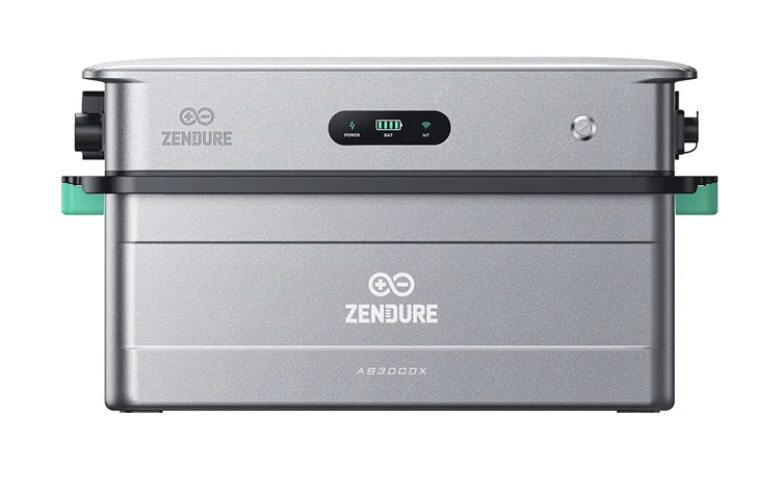
Contents
- Introduction
- Specifications
- Unpacking
- Installation
- First impression
- Thermal images
- Off-grid functions
- On-grid features
- Price per kWh
- Follow-up
Introduction
With rising energy prices, feed-in costs and a growing desire to live more sustainably, we started looking for ways to deal with our energy consumption more intelligently. Since we already had solar panels on the roof, adding home batteries was a logical step for us.
After previous very positive experiences with the Zendure Hyper 2000 (see also previous review ) we now continue with the latest product from Zendure: the SolarFlow 2400 AC – a modular, relatively affordable battery that promises to store excess solar energy for use when the sun is not shining. Unlike the Zendure Hyper 2000, you cannot directly connect solar panels to this. The idea is to charge your surplus solar panels via the grid in the 2400 AC.
In this review, we’ll take you through our experience with the Zendure 2400 AC: from delivery and unboxing, to installation, usage, our first impressions of its performance, and its price per kWh. We’ll share what works well, what didn’t quite run so smoothly, and whether or not we think this battery is worth the investment.
This review is intended for anyone considering purchasing a home battery – especially if you already have solar panels and want to get a better grip on your own energy household, your feed-in costs or just like to use your own solar panel power as much as possible. Just an honest look based on our own first experience. It is true that this is really a first impression. We have only been able to try out the AC 2400 for a few days. Fully testing all the possibilities requires more time. And for that we will also update this review in the near future.
Battery specifications
AB3000X
- Model ZDAB3000X
- Battery Nominal Voltage 48 V DC
- Battery life 6,000
- Nominal capacity60 Ah / 2,880 Wh
- Battery type: Lithium Iron Phosphate (LiFePO₄)
- Maximum Input/Output Voltage:
- One AB3000X battery: 2,880 W
- Two or more batteries: 3,840 W
- Maximum expandable capacity2,880 Wh × 6 = 17,280 Wh
- Charging temperature range 0°C ~ 55°C
- Discharge temperature range -20°C ~ 60°C
- Automatic self-heating function Yes
- Automated self-heating function -20°C ~ 0°C
- Aerosolve Flame Suppression System
- Activation temperature 170°C ±10°C
- Battery Protection Overcharge, Overvoltage, Short Circuit, Overheating Protection
- Compatibility: SolarFlow 2400 AC
- Dimensions477.5 × 320 × 194 mm
- Weight 26.1 kg
- IP rating IP65
Main Unit Specification 2400 AC
SolarFlow 2400 AC
- Model ZDSF2400AC
- Nominal input voltage/connection voltage 230 V ac
- Nominal frequency input/output 50 Hz
- Maximum input/output 2,400 W
- Nominal connection voltage 230 V ac
- Nominal frequency excursion 50 Hz
- Battery voltage range 37.5 V dc to 54.75 V dc
- Battery charge/discharge rate 2,400 W/2,600 W Max
- Battery charging/discharging current 60 A/54.17 A dc
- Operating temperature -20°C~60°C
- IP rating: IP65 (The device will not maintain IP65 waterproof rating if the terminal is used off-grid or when the waterproof cover is not properly sealed.)
- Dimensions: 410*302*75 mm
- Net weight 10.12 kg
- Gross weight 12.96 kg
- Wireless: Bluetooth 5.0
- Wireless: 802.11b/n/g
- Frequency 2402-2480 MHz (Bluetooth), 2412-2472 MHz (Wi-Fi)
- Maximum transmitter voltage 20 dBm (Bluetooth), 20 dBm (Wi-Fi)
Unpacking and first impressions
The delivery of the Zendure SolarFlow 2400 AC plug-in battery consisted of two boxes: one with the inverter and one with the AB3000X battery. Both were well packed to prevent damage during transport. At first glance, everything looked neat and professional, as we are used to from Zendure.
In the boxes we found the following:
• The inverter (10.12 kg) and the battery (26.1 kg)
• A wall bracket and mounting material
• A manual with reference to the apps
• A connection cable
Photos of the unpacking
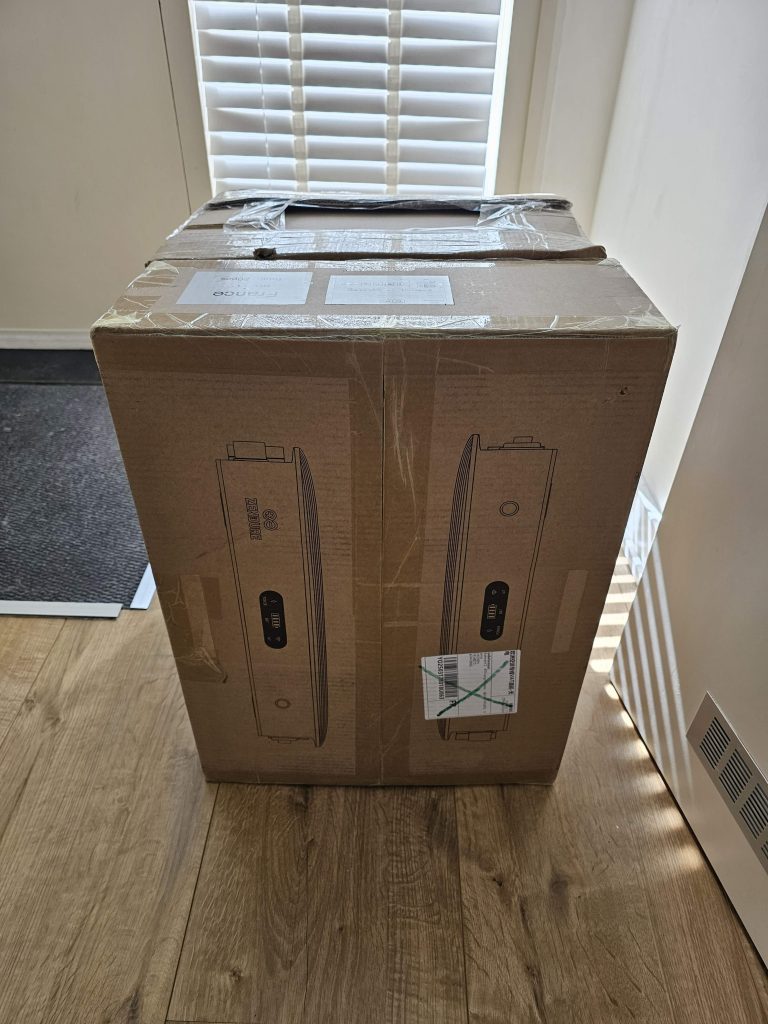
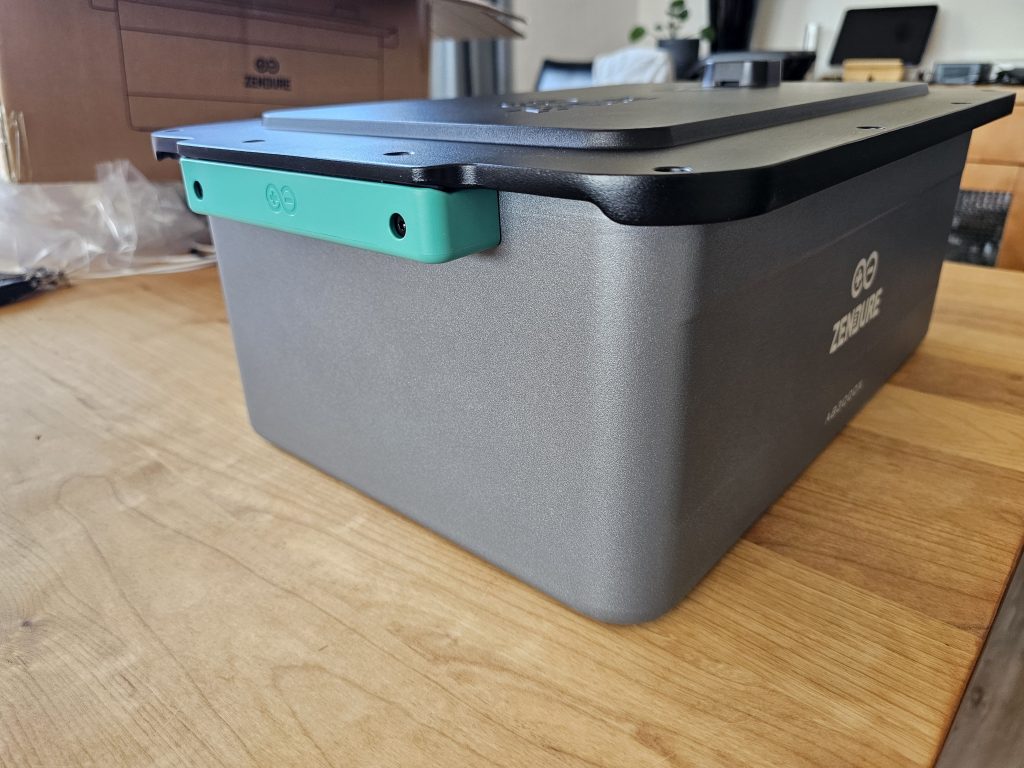
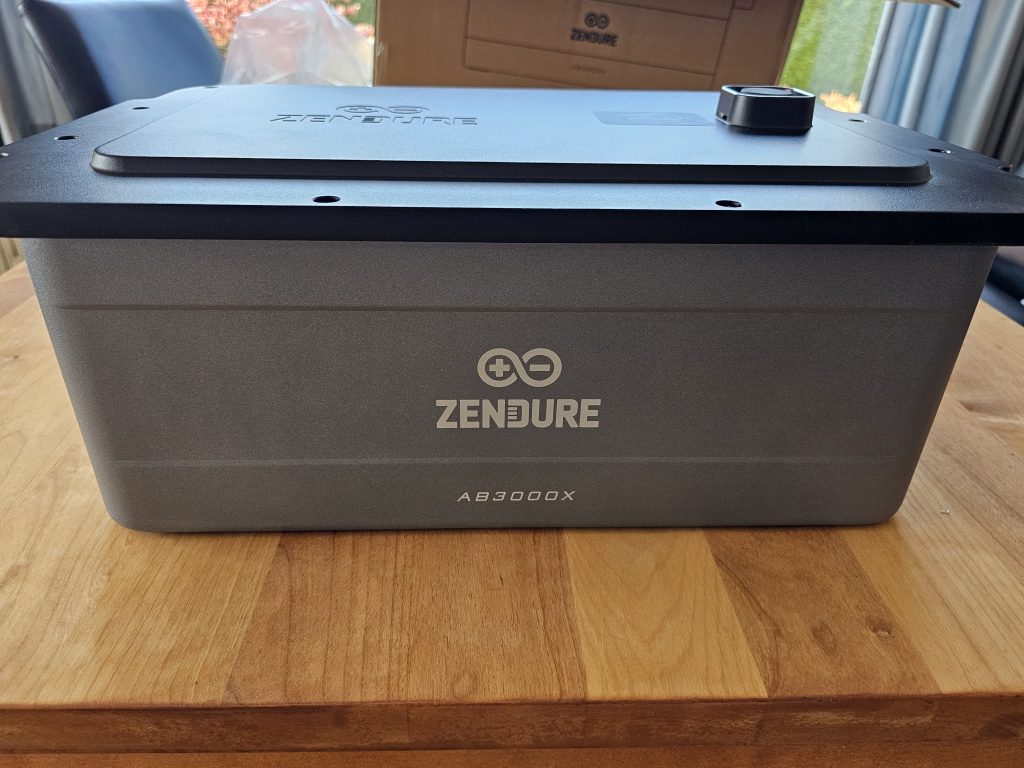
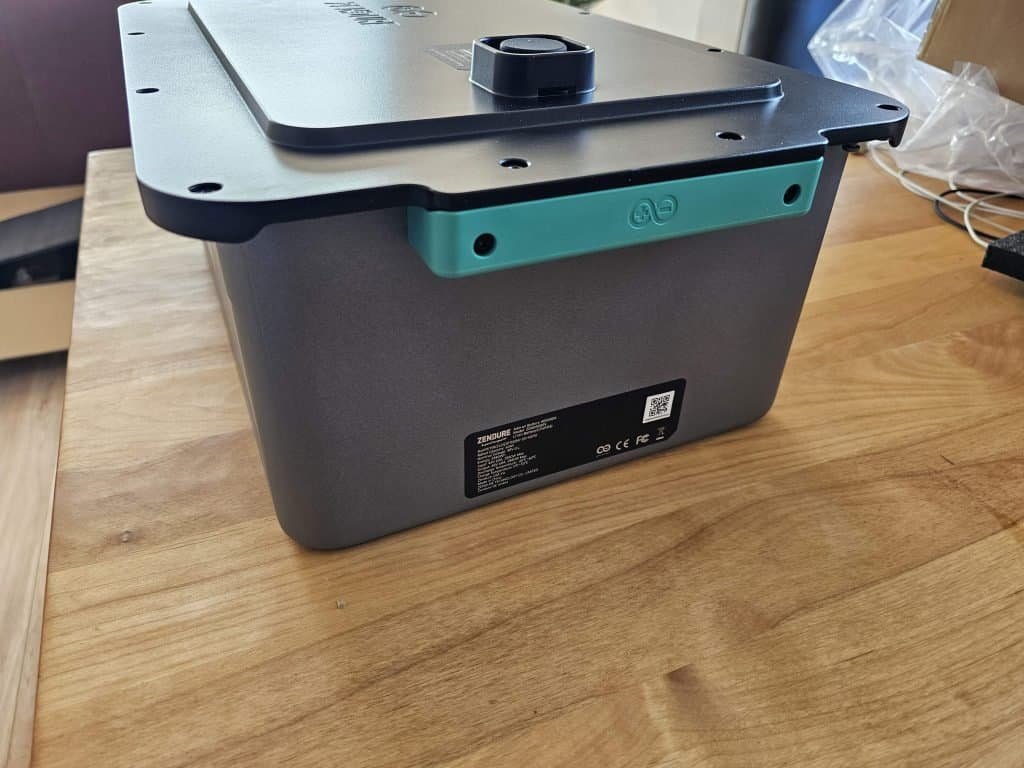
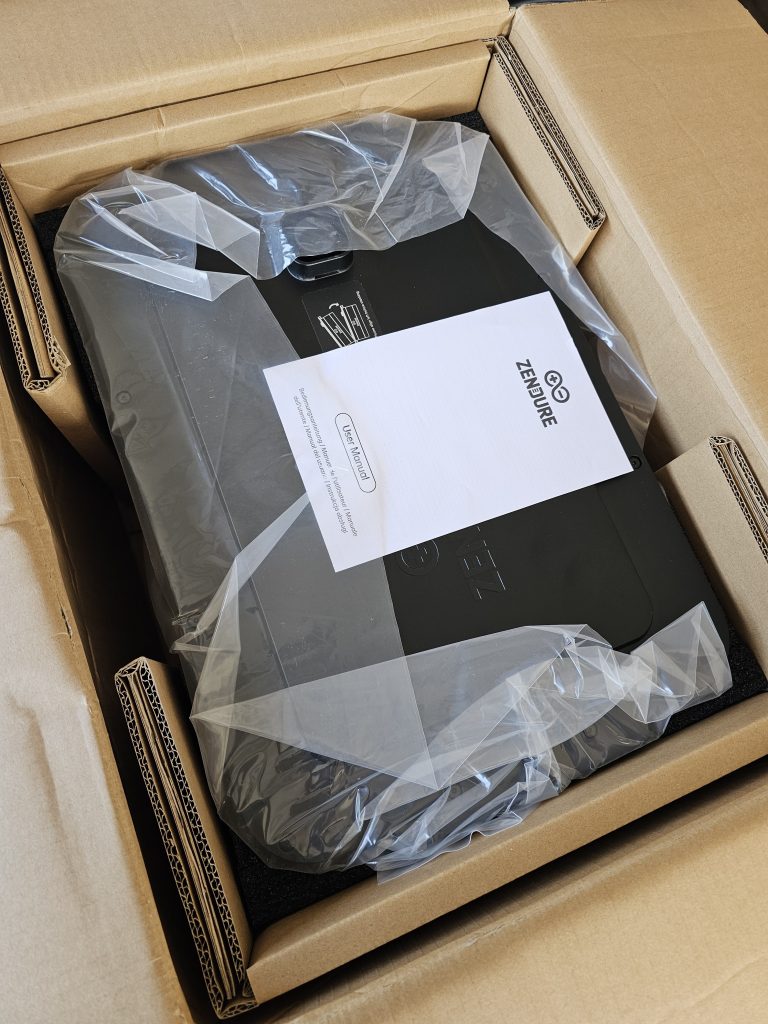
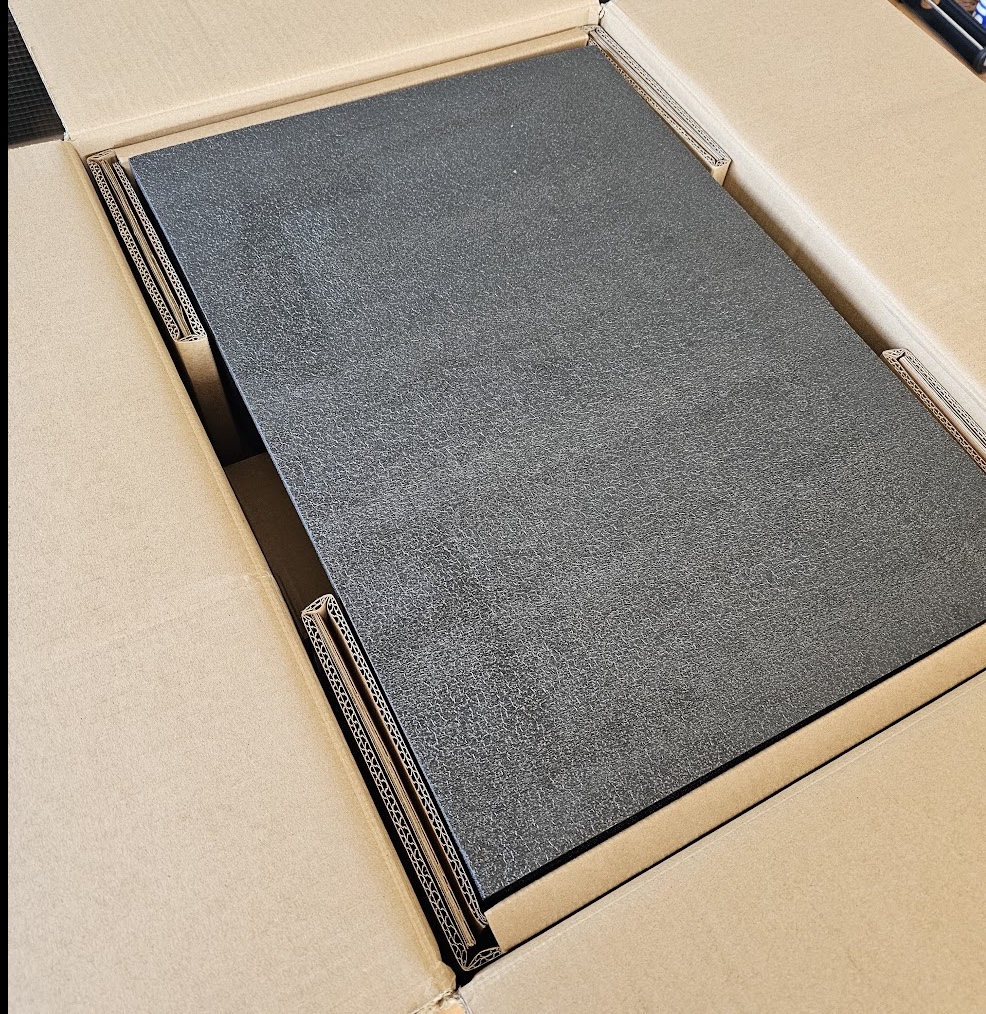
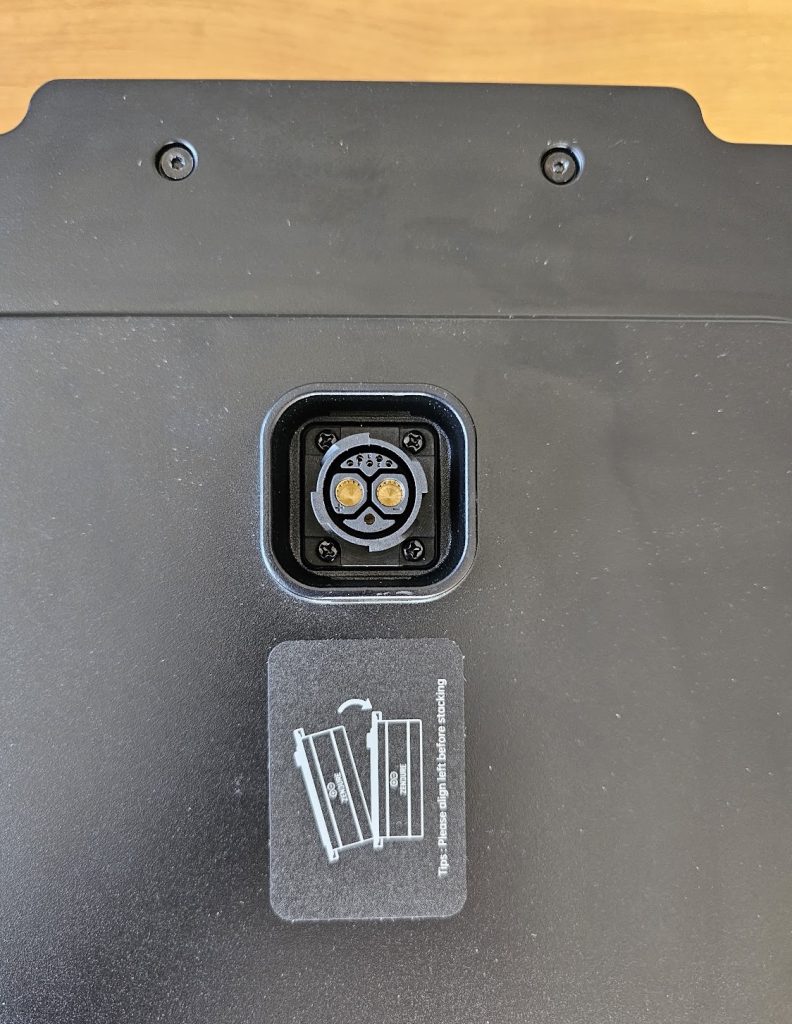
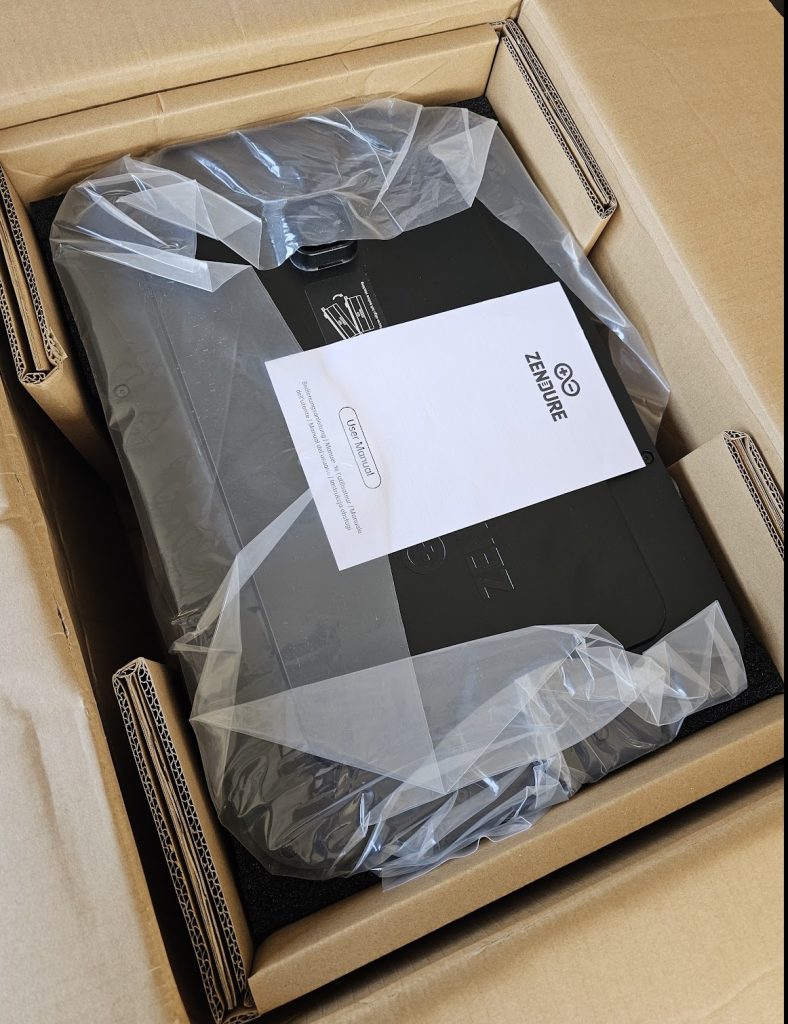
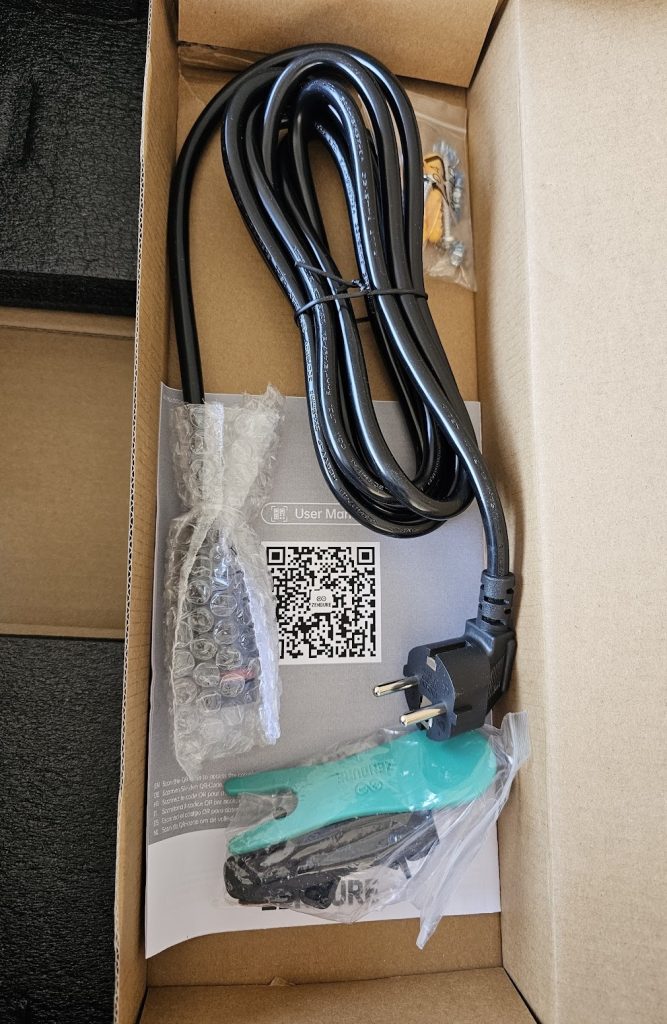
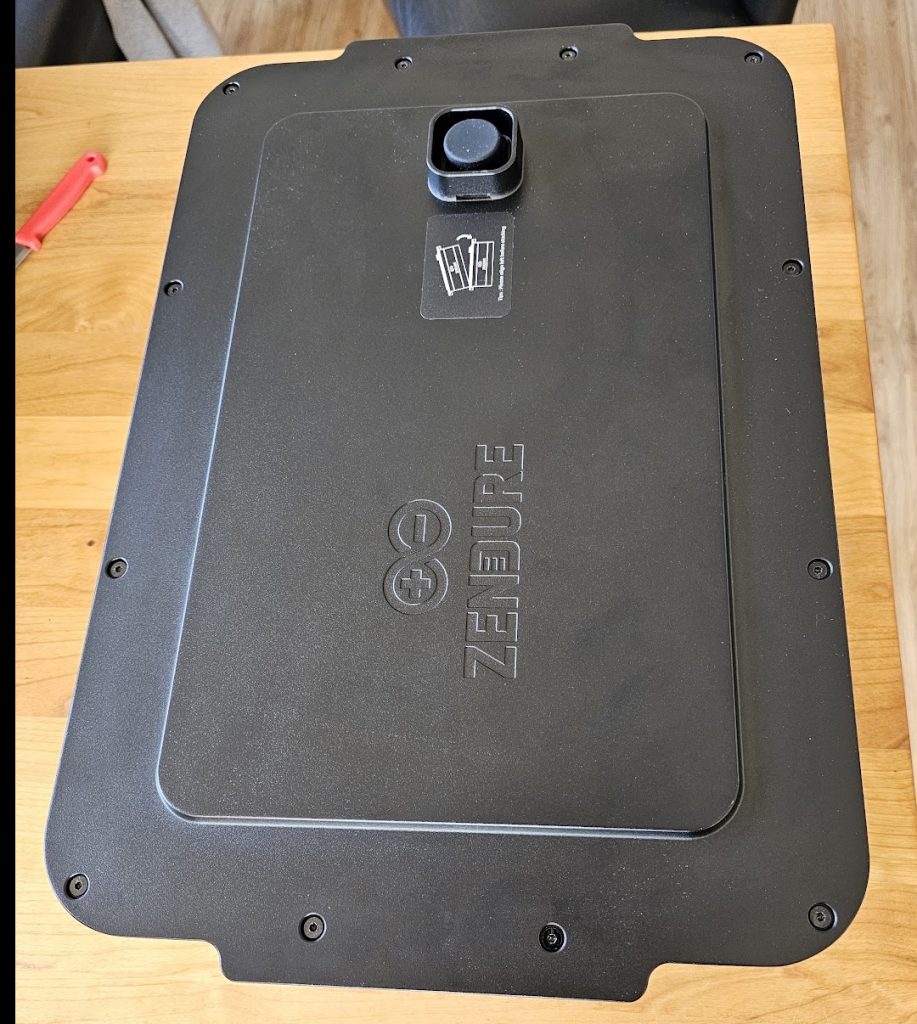


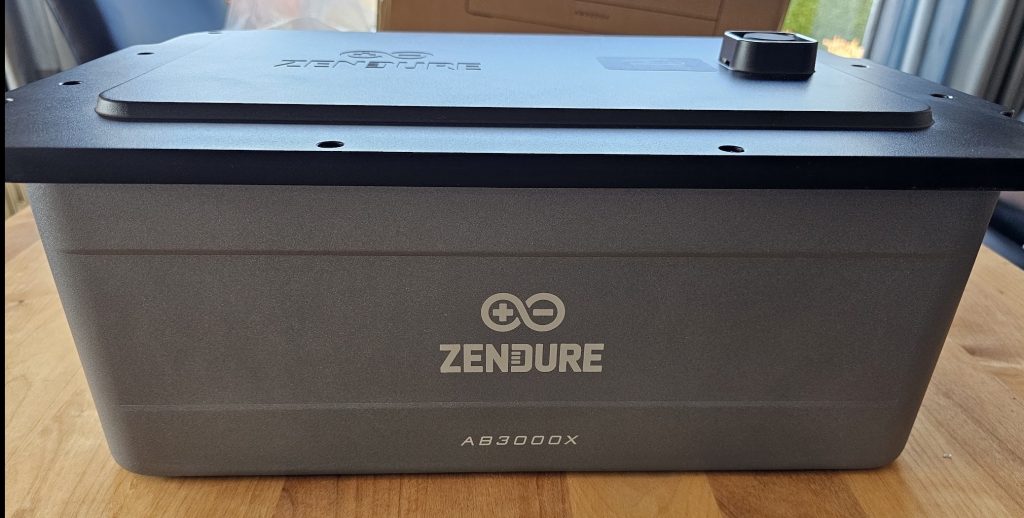
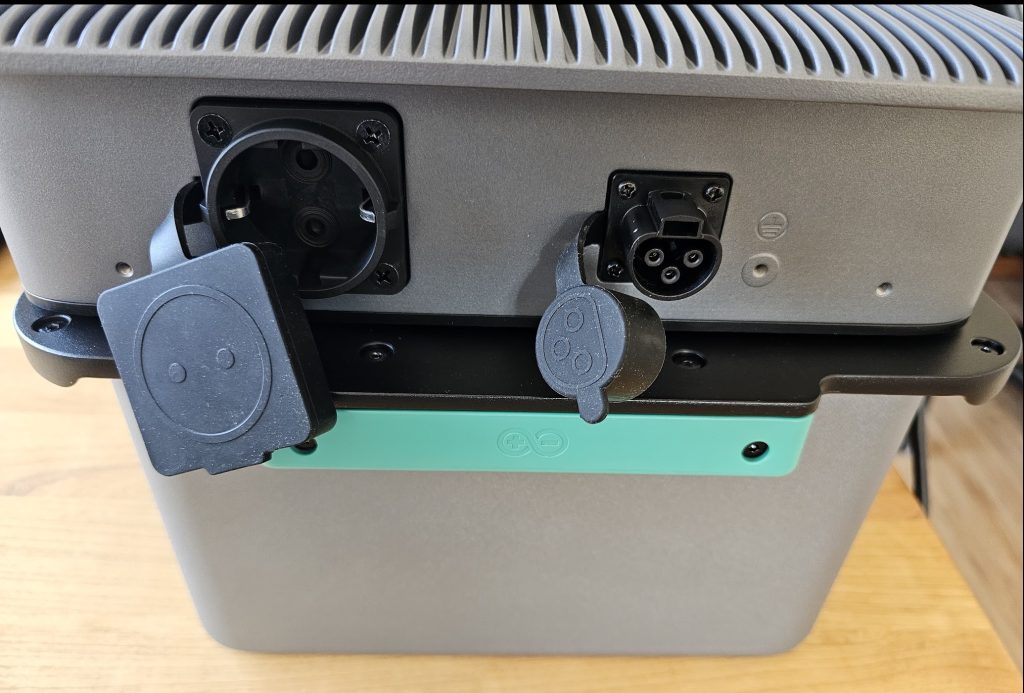
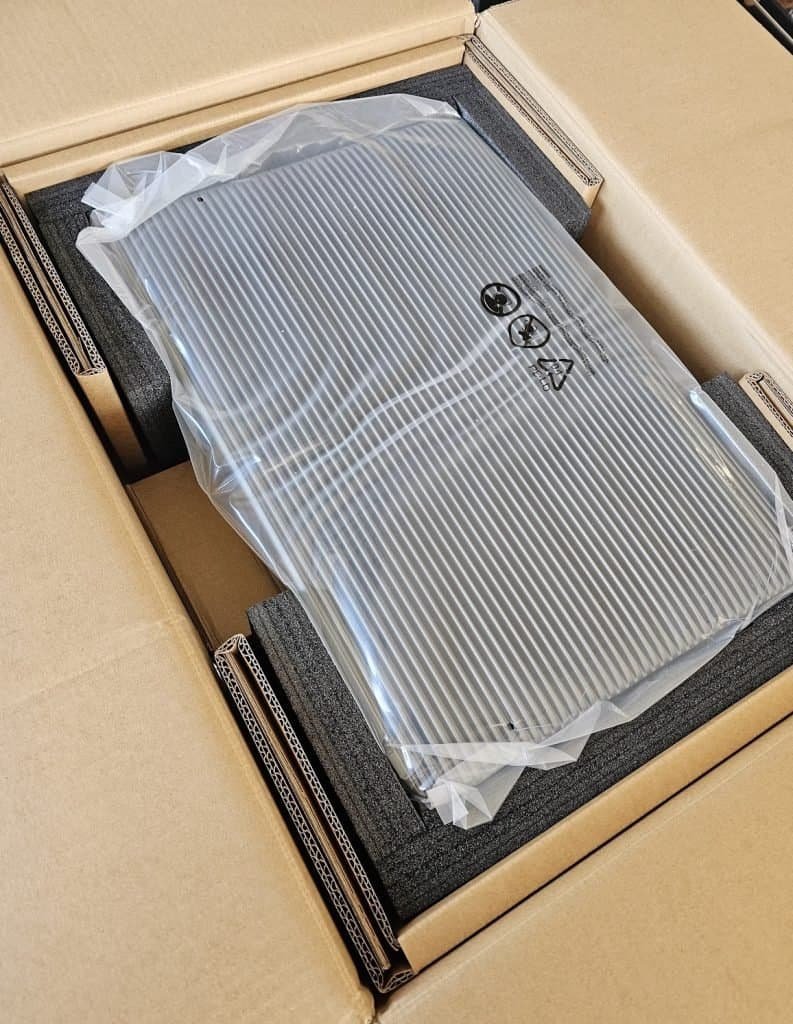
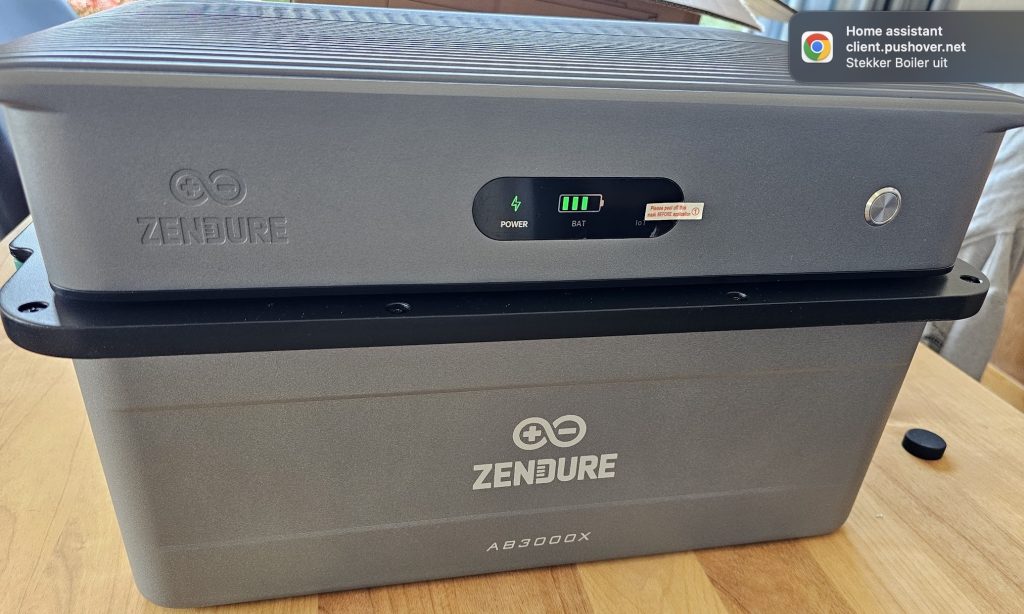
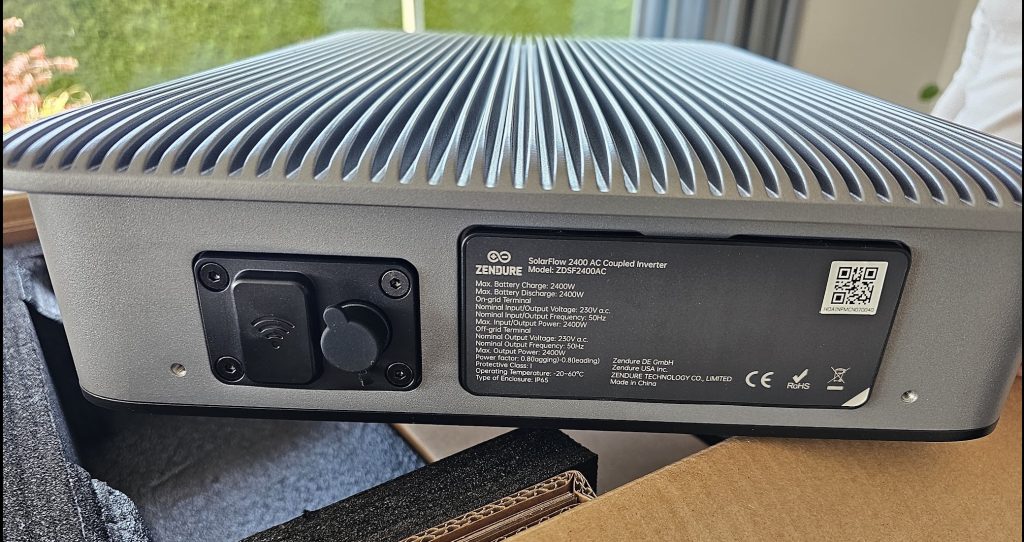
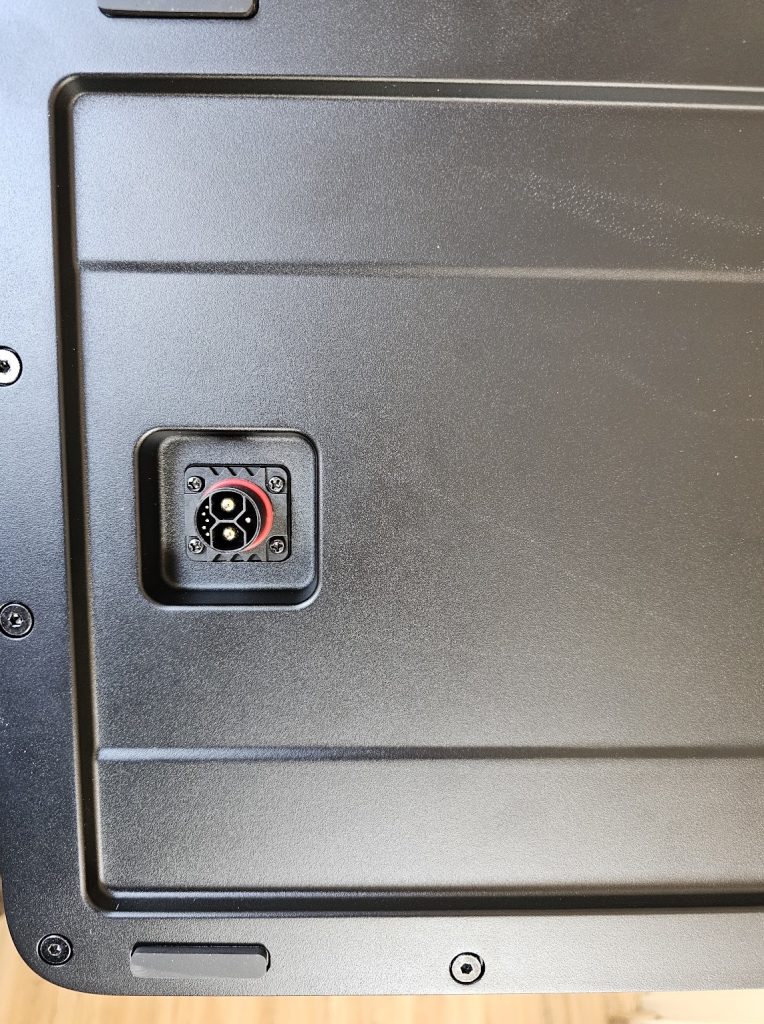
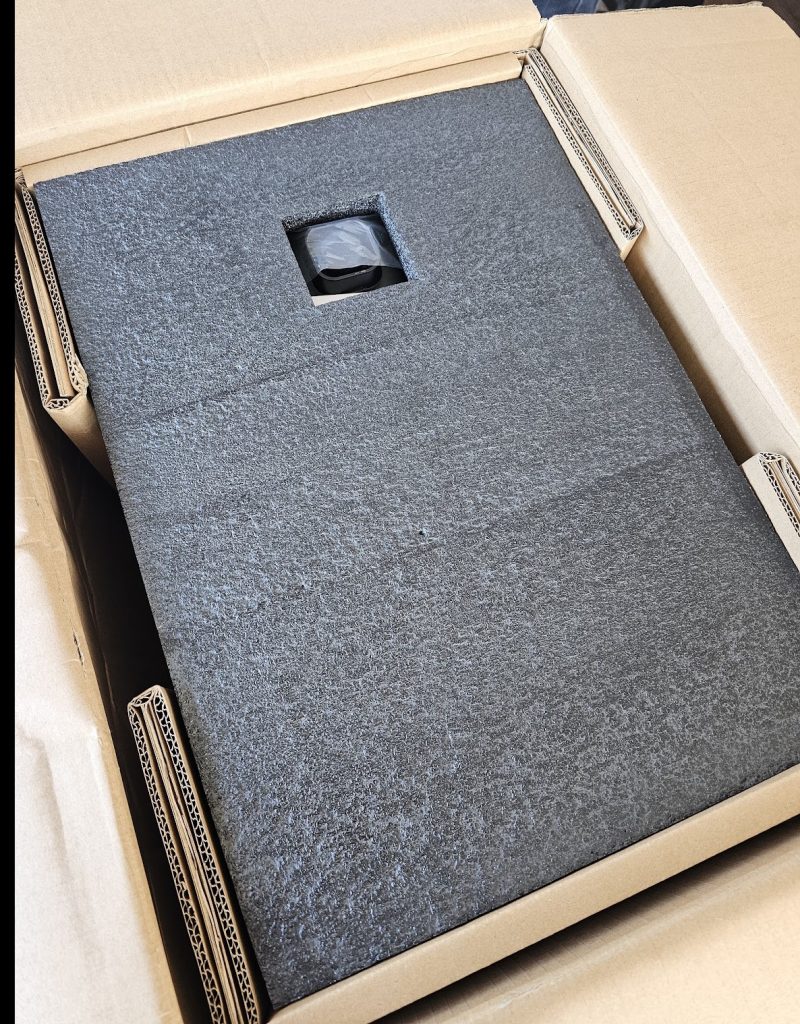
The battery and inverter feel solid and have a sleek, minimalist look. The design is clearly aimed at indoor or garage placement, but would also look good in a utility room. Given the IP rating, you can even place the battery outside (under a canopy, for example). In terms of size, the whole thing is slightly more compact than expected – which is positive. Compared to the Hyper 2000, the housing is mainly wider and deeper. The same applies to the battery, which is flatter and deeper than the AB2000 used in the Hyper 2000. The total weight of 36.22 kg was also easy to handle with two people.
For the image we have placed the new 2400AC next to the existing Hypers 2000 so that you get an idea of the differences in size of these home batteries.
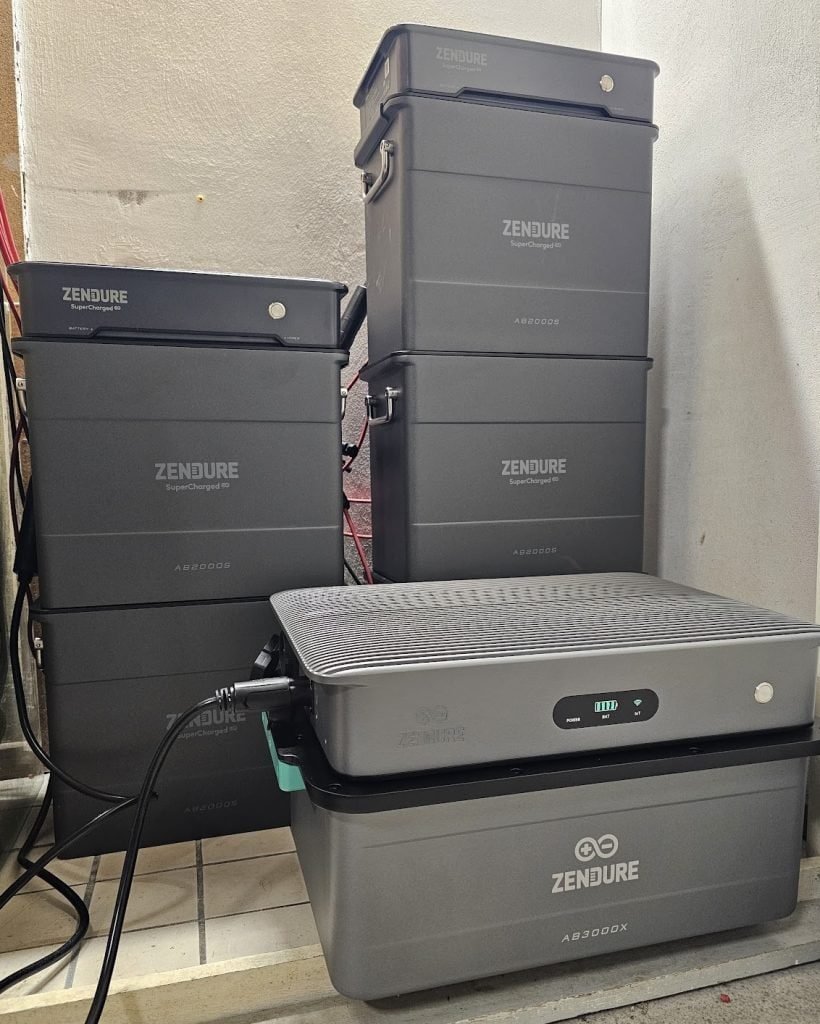
What immediately stood out was the finish: no loose edges, nicely concealed screws and a clear display. This immediately gave the feeling that we are dealing with a premium product here – hopefully that will also apply to the performance.
Installation process: plug and play
We find this a great advantage of this type of battery. It is truly plug and play. You connect the battery to the main unit (drop the battery output into the input of the main unit), connect the connection cable with the plug and plug it into the socket. Done 🙂 and then you get started with the software / app!
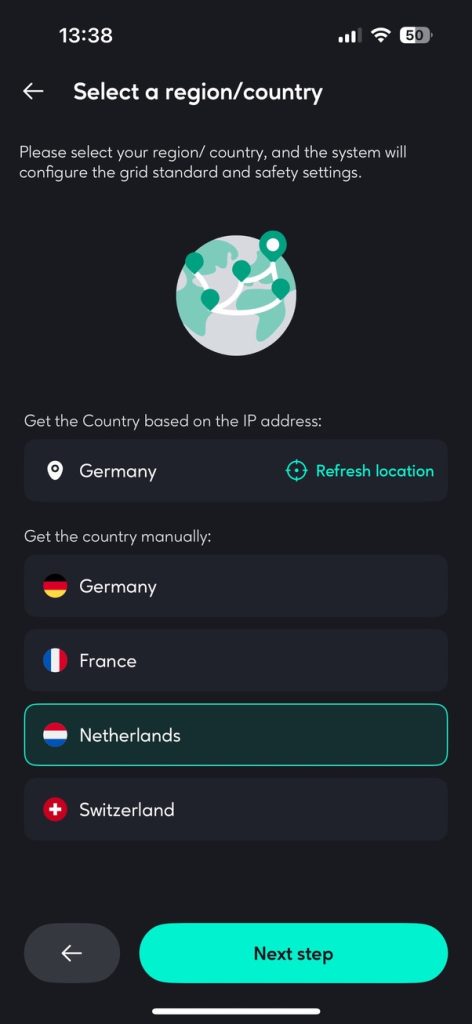
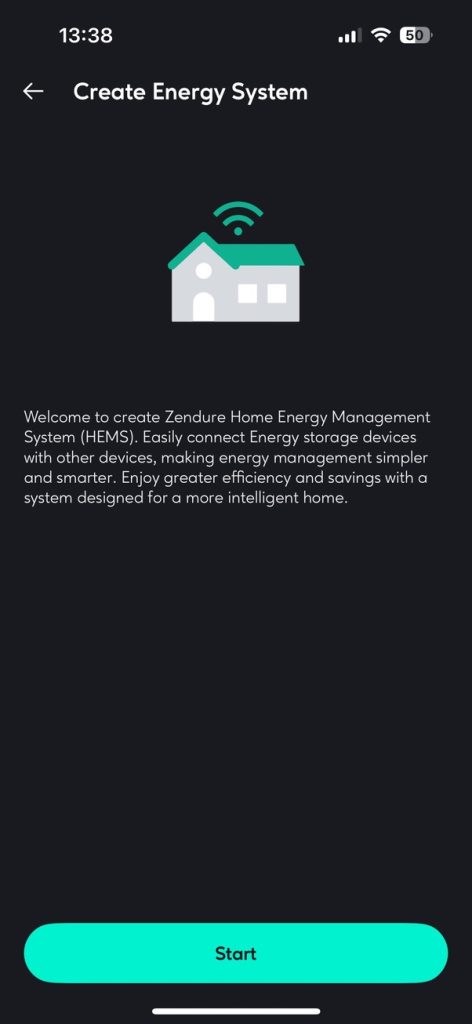
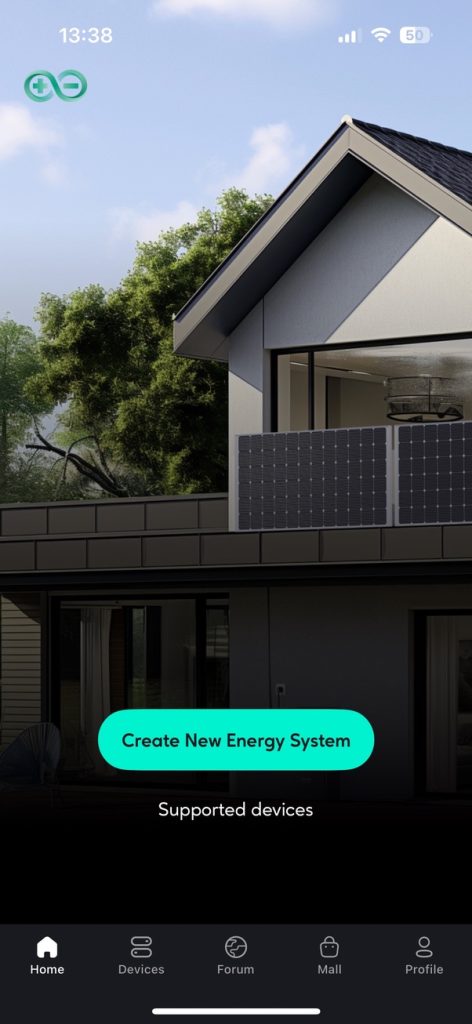
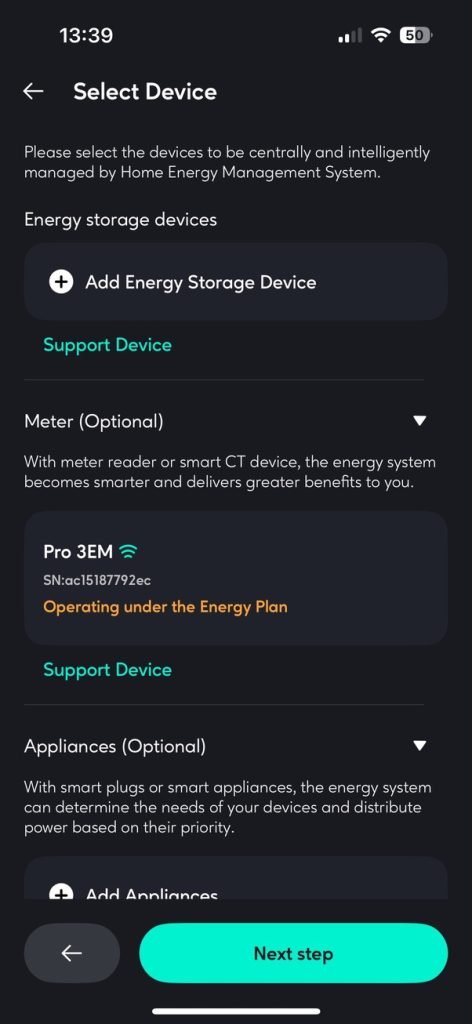
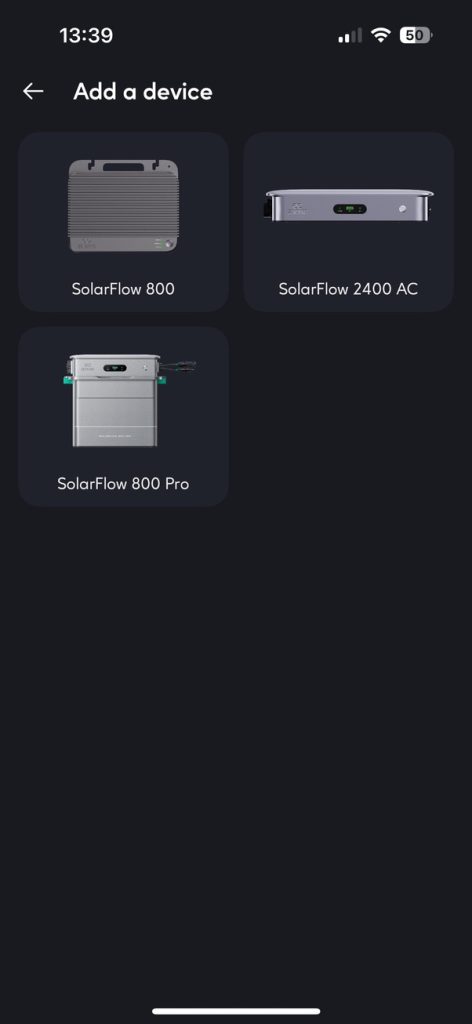
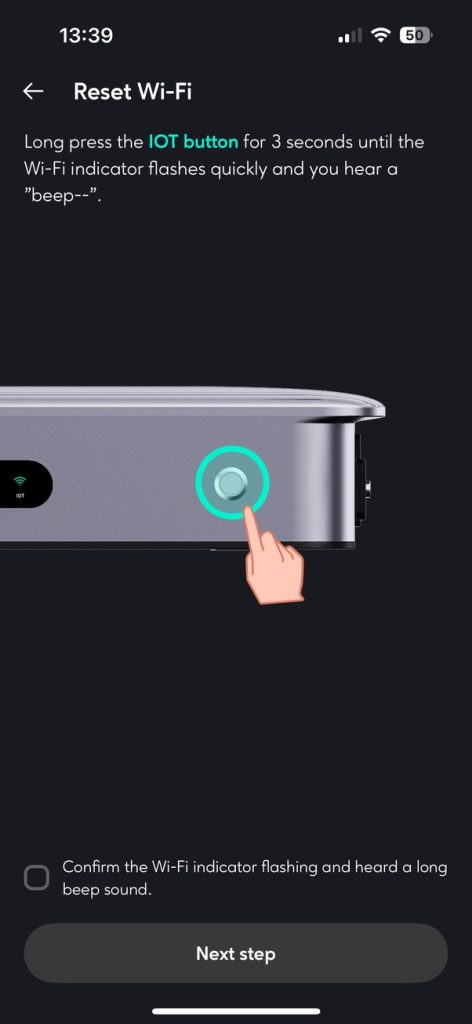
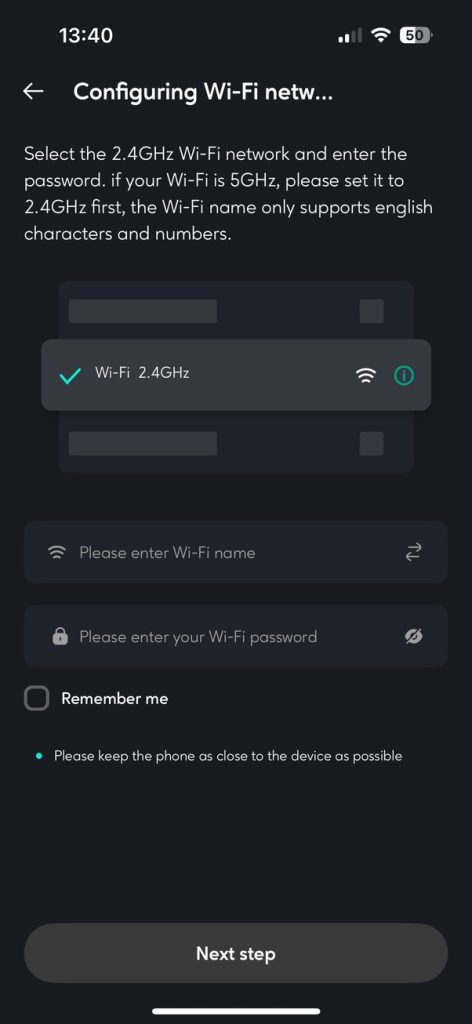
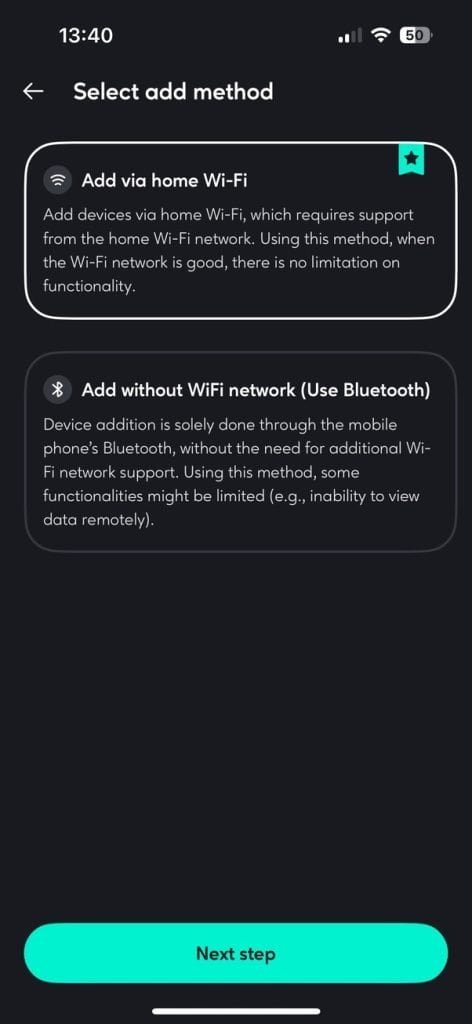
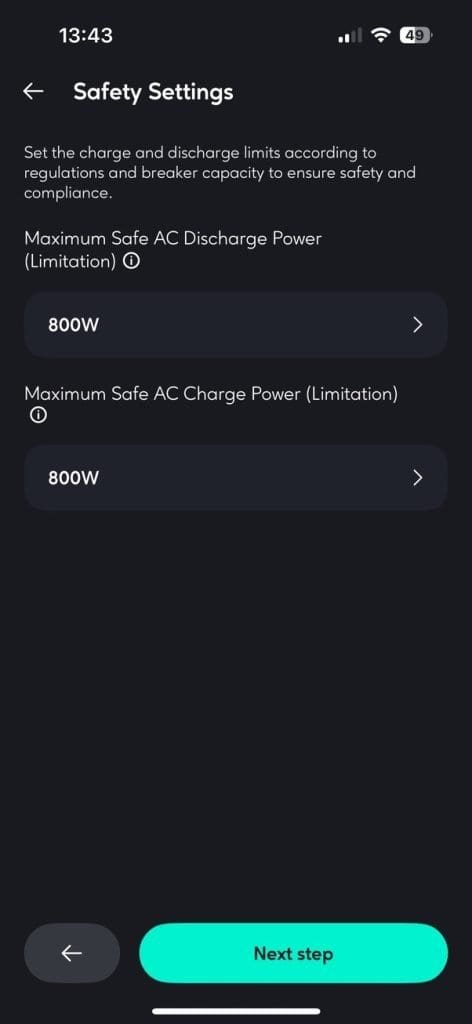
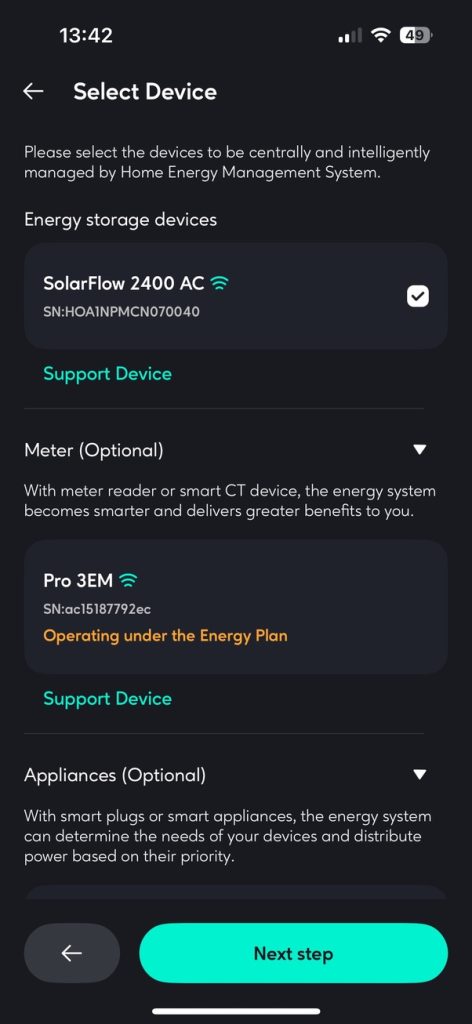
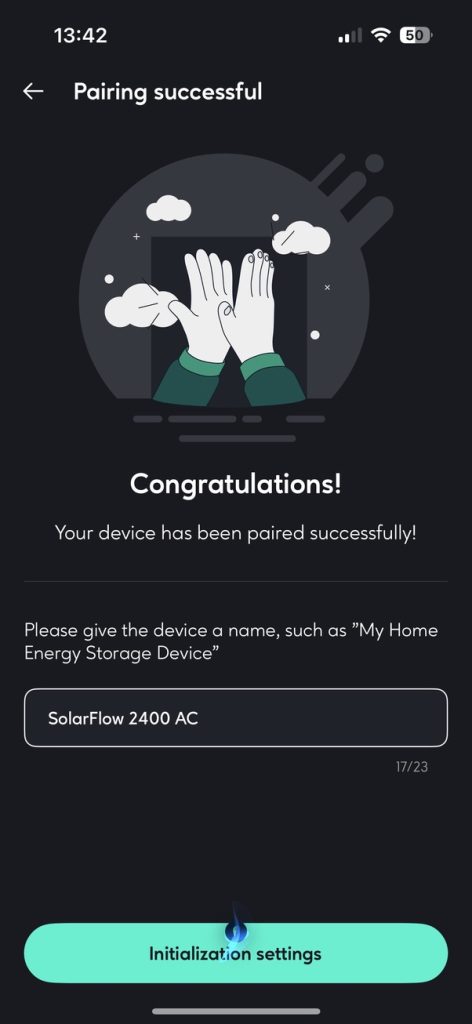
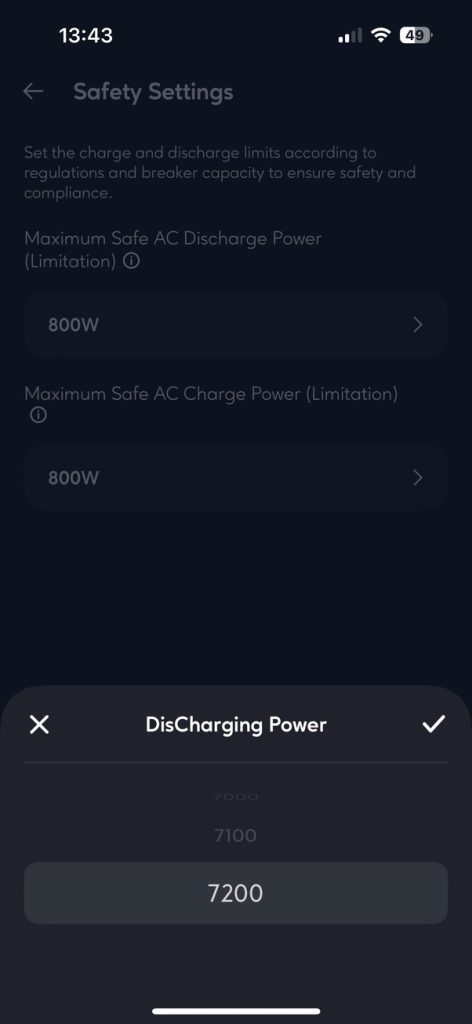
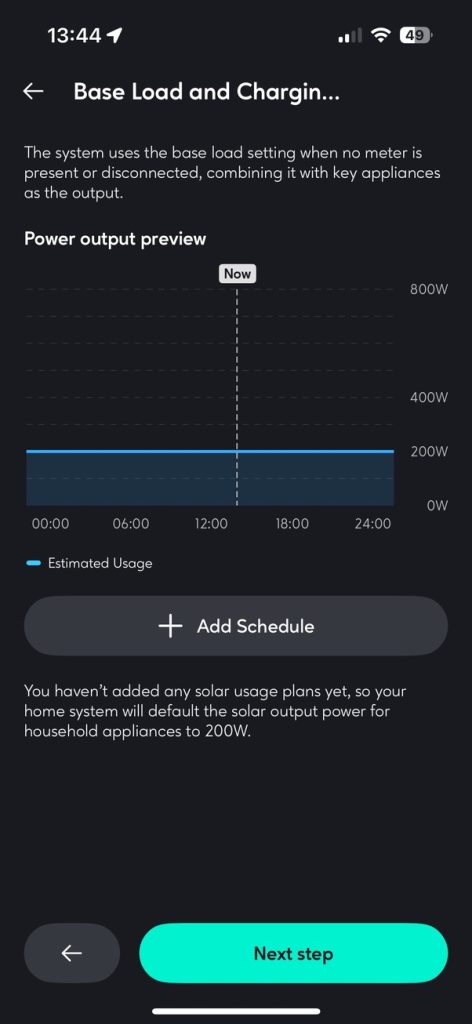

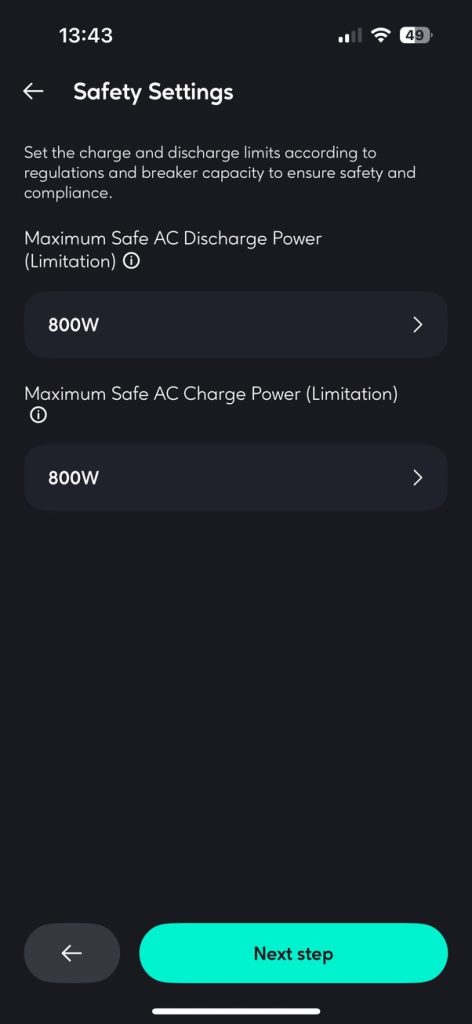
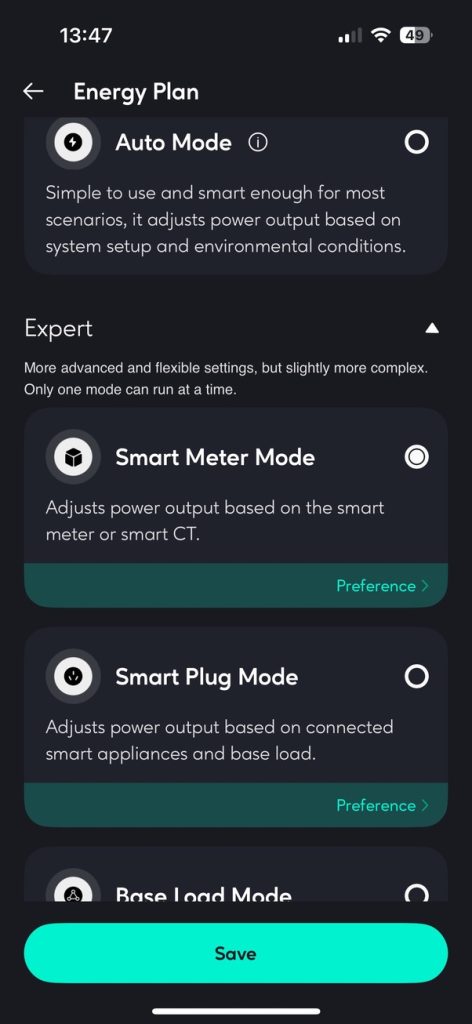
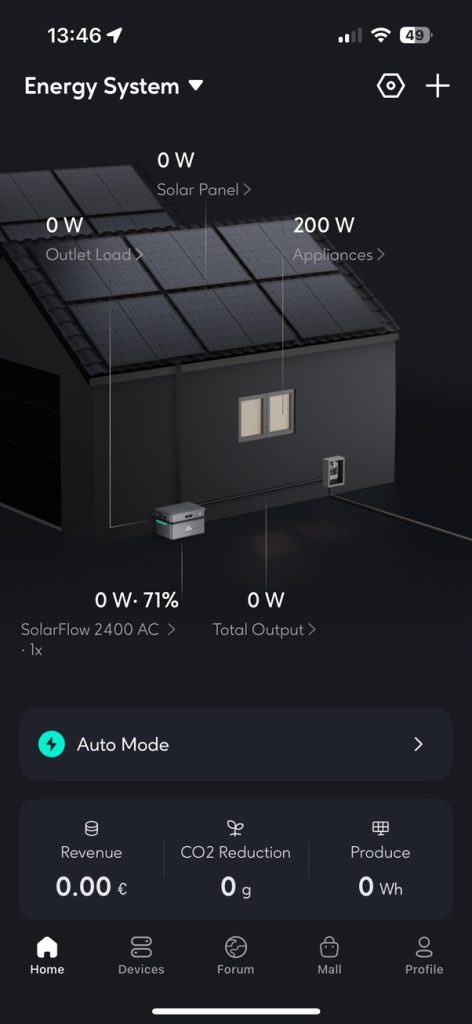
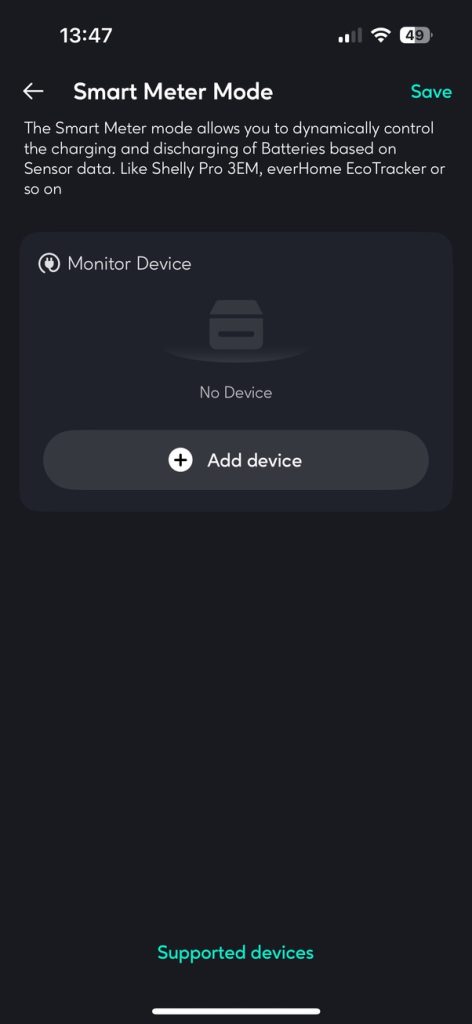
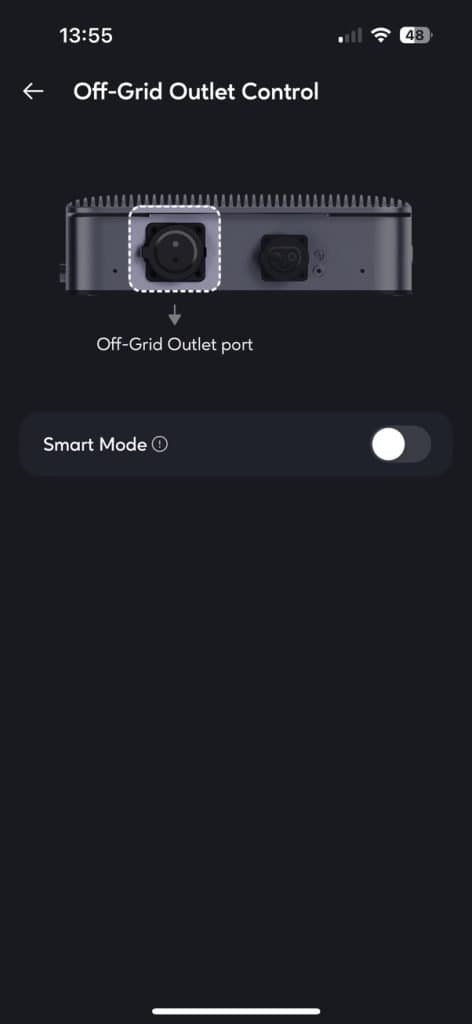
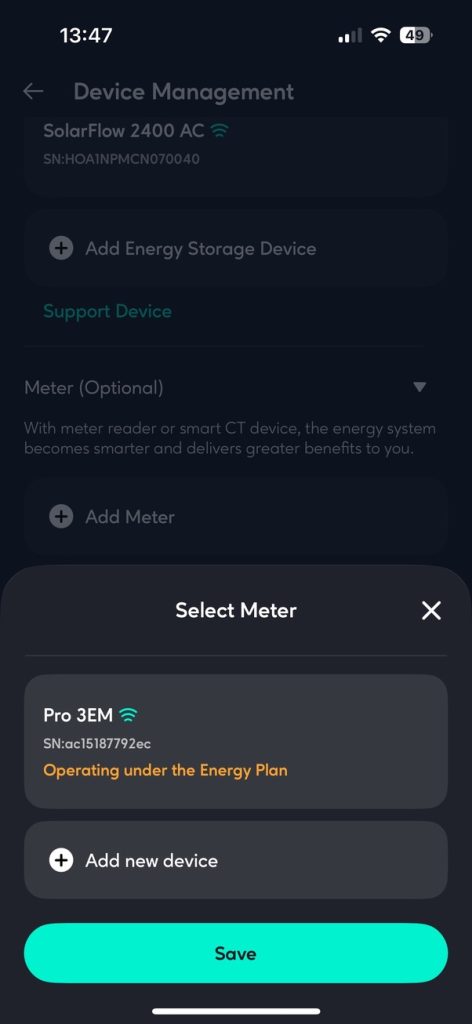
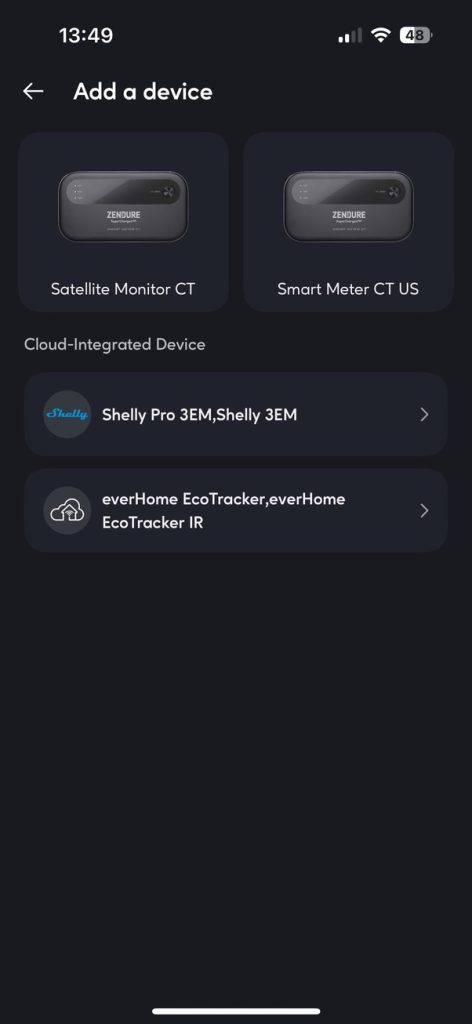
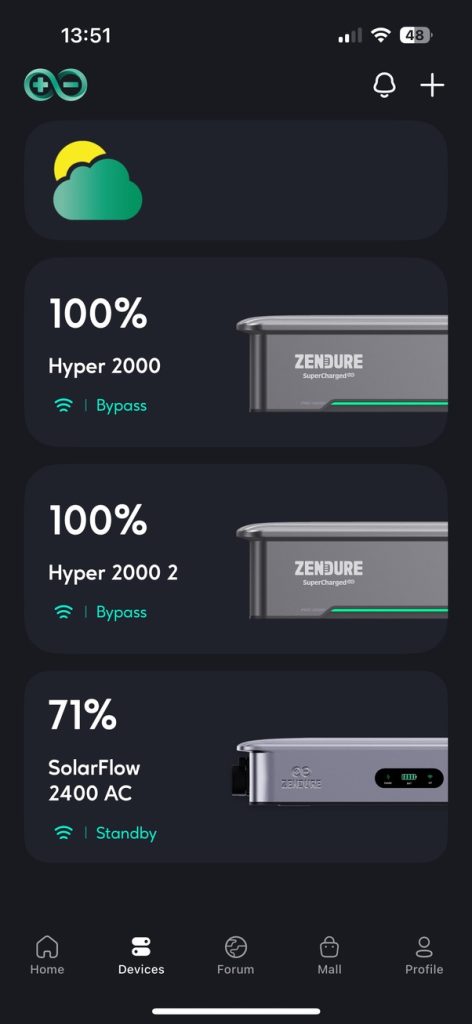
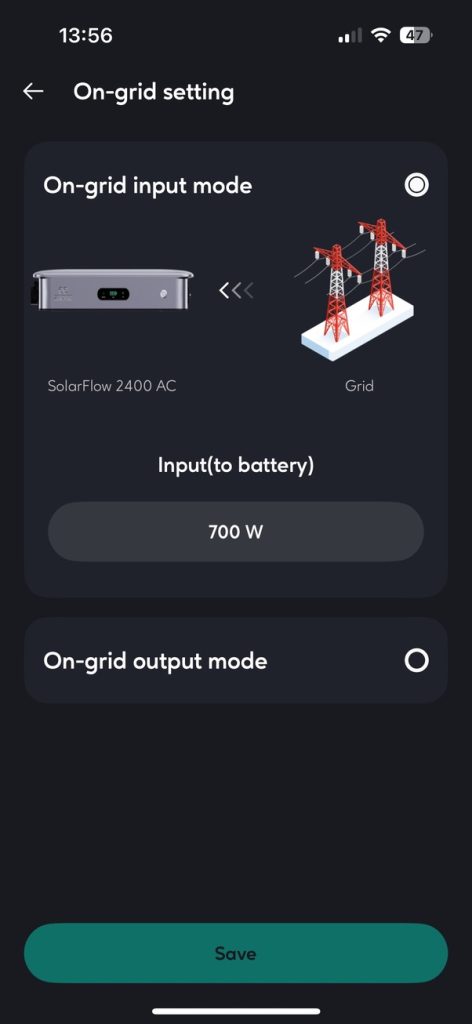
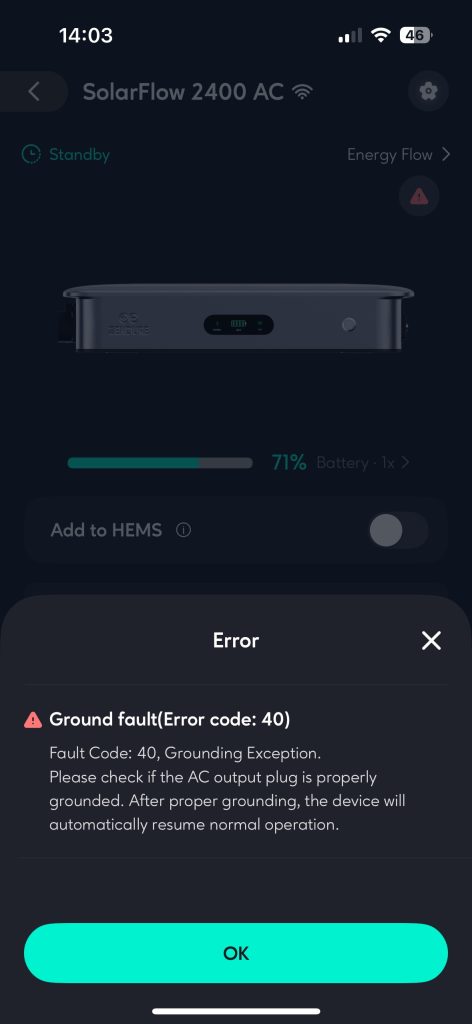

First impression
Using both the HEMS functionality and the standard mode is a bit confusing at first . We will have to experiment with this a bit more in the coming period to find out what works best in practice. What is notable is that the ZEN+KI functionality will become a paid option after the trial period. How much this will cost is not yet known – we could not find any information about this in the app. For potential buyers, this could be a disadvantage.
The off grid functionality also works nicely at first glance. You can also use the outlet when the battery is connected to the mains.
On the other hand, the standard functionality is already quite extensive, including smart plans , manual control and logical settings. We also expect that integration with Home Assistant will soon be possible (as we also control our Hypers), although that is not yet guaranteed at the moment.
If you are already familiar with the Hyper 2000 and you use the standard functions such as smart control based on energy prices, PV surplus or manual control, then you can actually get started with the 2400 AC right away – and it works surprisingly smoothly. The first impression is good, a nice solid product with a lot of functionality (certainly compared to a Homewizard home battery for example). And the price is also reasonable. The set we reviewed currently costs 1,448 euros including VAT.
Thermal images
Below you see the first thermal photos, taken while charging with 800W.
The first photo was taken after five minutes, the second after an hour. You can clearly see that the 2400 AC gets a bit warmer, but the temperature difference remains limited. In the second photo the temperature is still only 33 degrees.
Part of the reason for this low thermal image is that we are currently charging at 800W, and not at the maximum power of 2400W. Since we only have one AB3000X battery hanging under the main unit, we cannot safely test at full power (due to the C-value of 0.8) without potentially shortening the battery life.
In the coming period we will also measure and report the Round Trip Efficiency (RTE) of this configuration.
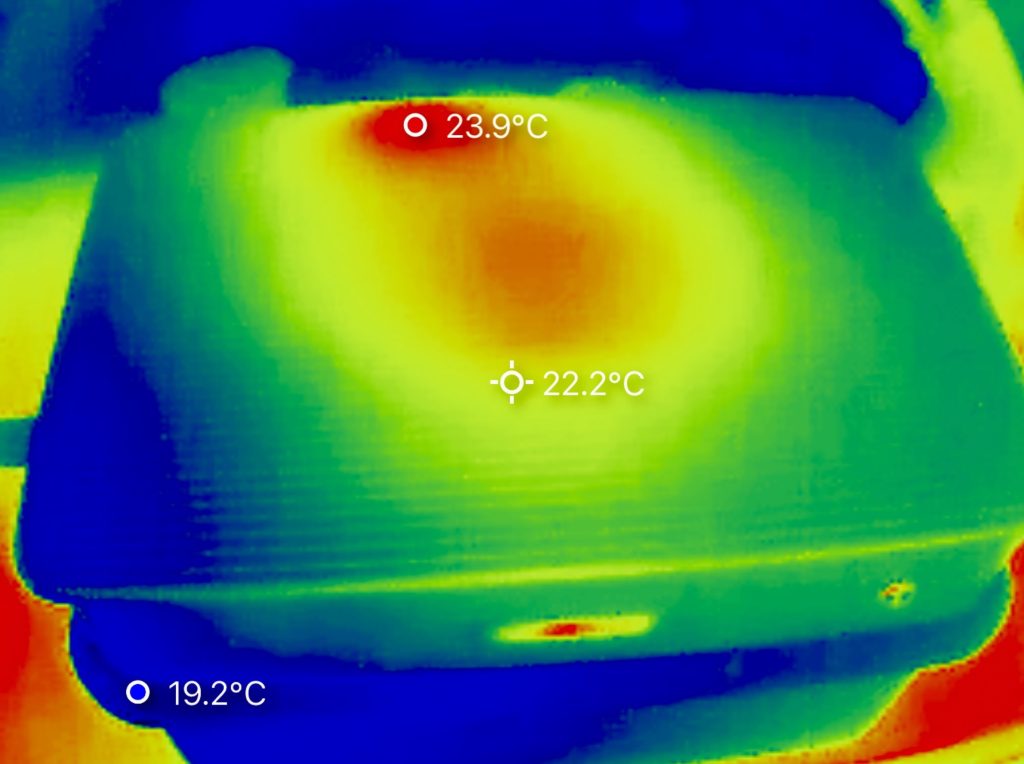
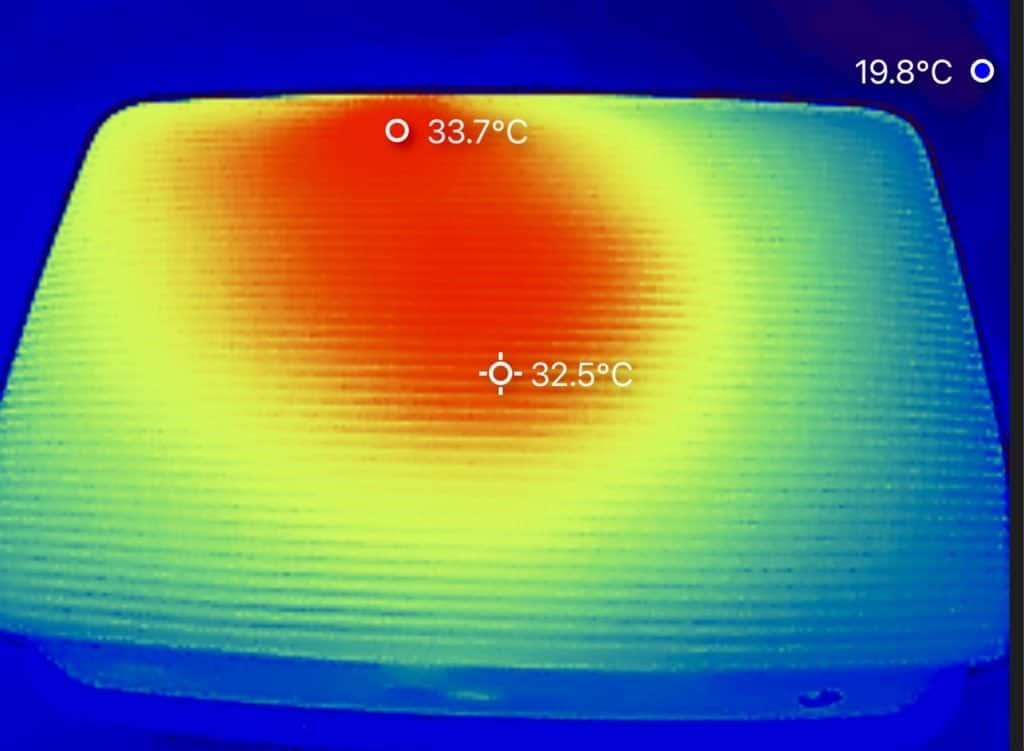
Connecting 2400 AC off-grid and external microinverter
After disconnecting the mains connection, the off-grid outlet still delivered decent power, up to 2400 watts continuously.
What is really interesting is the possibility to connect the AC output of an existing inverter – for example from solar panels – directly to the off-grid port of the battery. We tested this with an APS microinverter . The battery started charging immediately from the connected solar panels. And this not only worked in off-grid mode, but also while the system was simply connected to the grid. This makes the name SolarFlow true: the system allows solar energy to flow flexibly where you need it.
However, there is still room for improvement. For example, we noticed that the firmware sometimes gives a confusing picture of the energy flows. In the app, it shows that the battery is discharging to the off-grid output, while in reality it is charging. At the same time, the SOC (State of Charge) simply increases, which confirms that the visual representation in the app is not completely accurate.
🔋 Off-grid testing with the Zendure SolarFlow 2400 AC and a microinverter
How exactly does the system behave when you connect a microinverter to the off-grid output? Here is the result:
🧪 Off-grid test: power strip with micro-inverter and lamp
As a test setup we connected a power strip to the off-grid output of the 2400 AC. We connected both a microinverter and a lamp to this .
• ✅ While charging the battery, the light just kept burning.
• ✅ Even when the battery was fully charged, the light remained on continuously.
• 🚫 The power supply from the microinverter was automatically blocked in that case , as it should be — to prevent overcharging.
This demonstrates that the 2400 AC handles off-grid energy flows correctly , intelligently controlling local production depending on battery status.
🔄 On-grid behavior: production via bypass
When we reconnected the system to the grid, the behavior changed as expected:
• The microinverter’s production went directly to the grid via the bypass function . Thanks to the “allow” setting, excess power was neatly exported .
• This was done in the standard Auto Mode of the 2400 AC — so without any additional Zenki control.
• And again the lamp continued to function normally, both during charging and when connected to the mains.
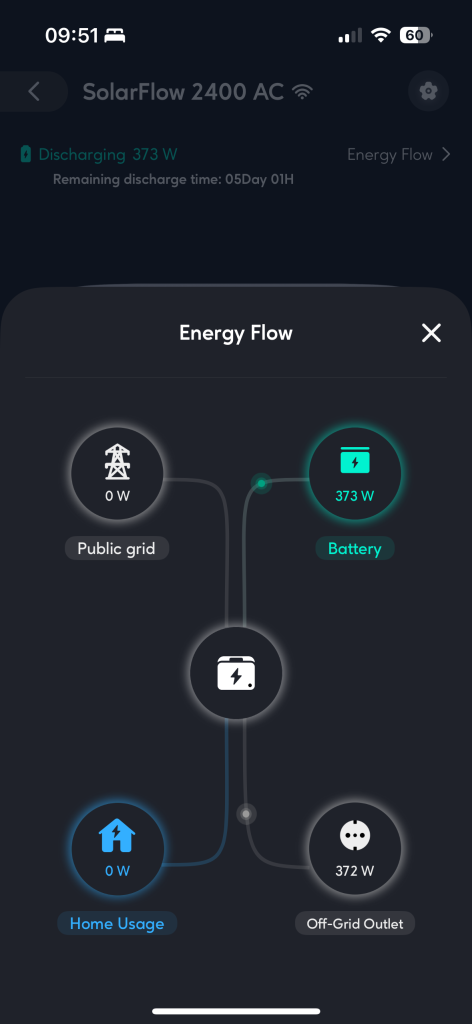
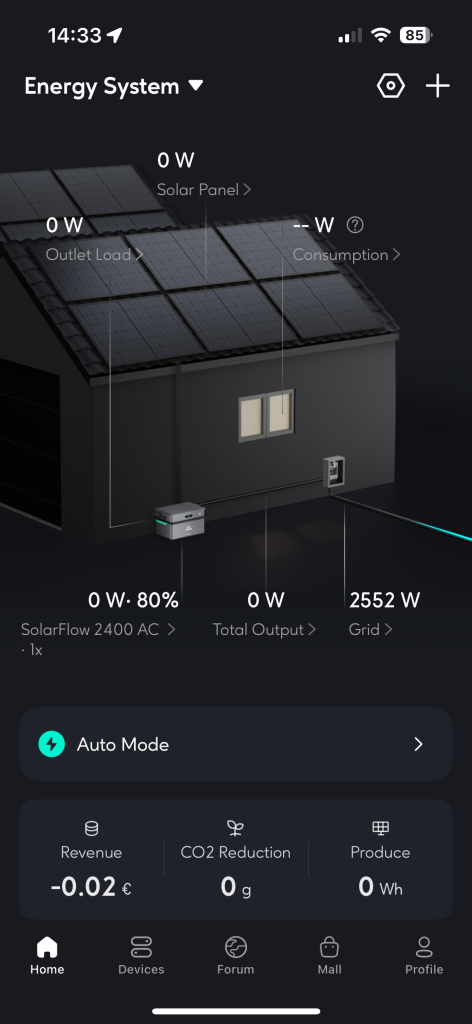
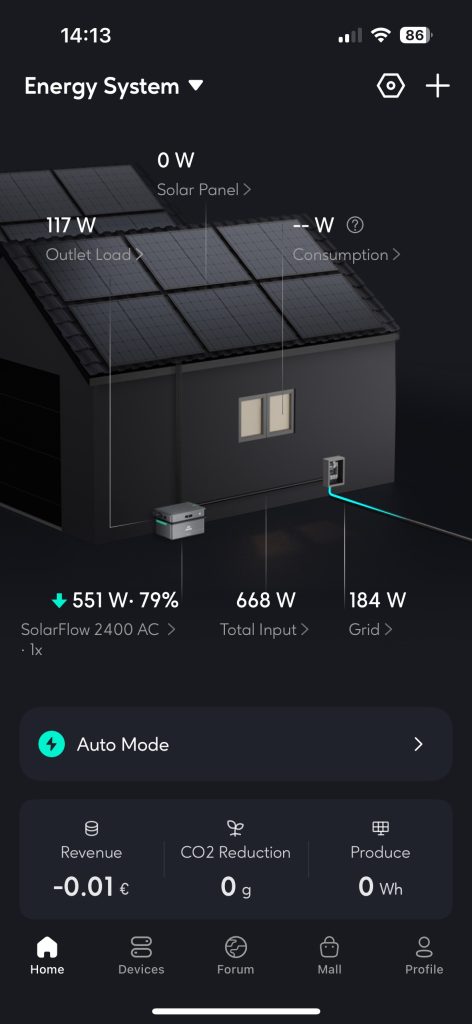
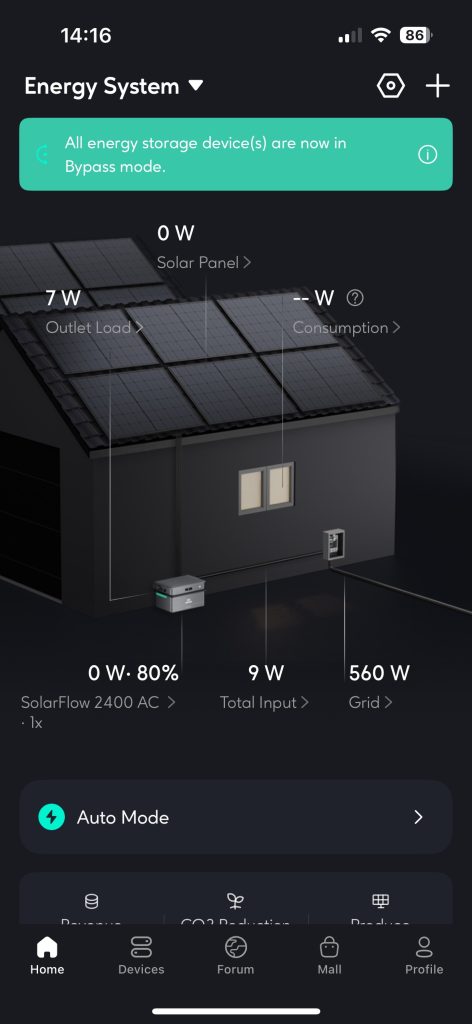
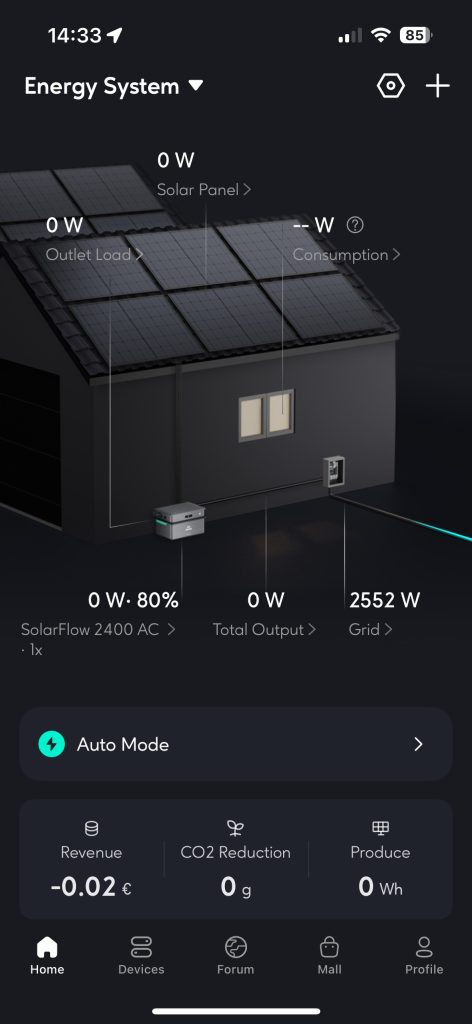
All this in the standard auto-mode with a Shelly PRO 3EM connected. We have to say that the Zenki control is not very intuitive and not very clear. There still needs to be some improvements to the firmware it seems.
Price per kWh
The standard version of the Zendure 2400 AC currently costs €1,448. This includes a Shelly PRO 3EM (with clamps) and the discount code ‘subscribe’. For this amount you get the main unit, one AB3000X battery and the Shelly. Converted this comes to €482 per kWh, which is on the high side.
The big advantage of the 2400 AC is that it is expandable to 17.3 kWh (with a total of 6 × AB3000X). In that case you only pay €329 per kWh. Compared to alternatives such as the Hyper 2000 and the SolarFlow 800 Pro , this is one of the lowest prices per kWh.
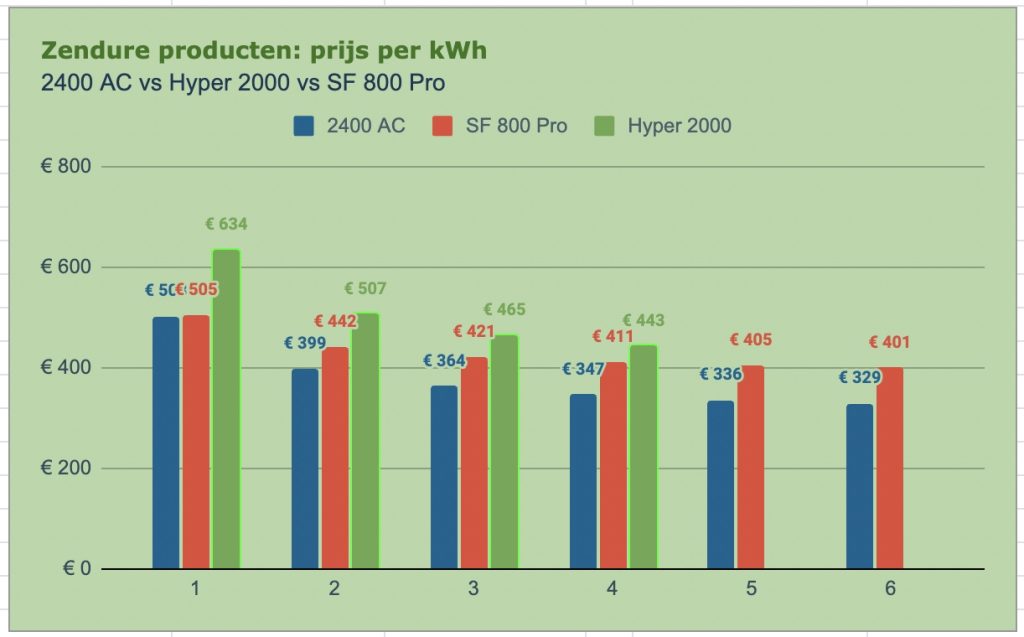

However, with the Hyper 2000 and the SolarFlow 800 Pro you can connect solar panels directly. This results in less conversion loss (DC-DC to AC is more efficient than AC-DC and then back to AC). Depending on your situation, this can be an important advantage. If you still have space to connect solar panels directly, this is usually the most efficient in terms of conversion losses (the so-called Round Trip Efficiency ).
Finally, it is wise to consider carefully whether you can actually use all those extra kWhs usefully. There are several free tools available online to make this clear—especially if you have quarterly or hourly values from your smart meter.
Follow-up
In the coming period we will expand this review piece by piece with our experiences. Both in terms of hardware and software. Keep an eye on this website! Also a review about the Zendure Solarflow 800 Pro will follow at the end of April!
Disclaimer
energienerds.nl has a partnership with Zendure to review products and we receive these products for that. However, no agreements have been made about the results of the review. If we don’t like something, we will always indicate that.

Leave a Reply